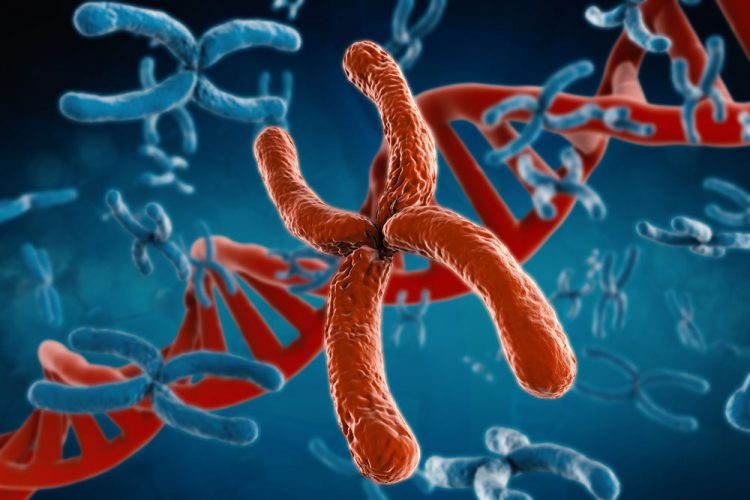Gene manipulation holds the key to personalised medicine
Posted: 5 February 2018 | Dr Zara Kassam (Drug Target Review) | No comments yet
Researchers propose a novel approach to manipulate genes that may hold the key to the future of personalised medicine…


A new study proposes a novel approach to manipulate genes using a self-assembling platform that delivers nucleic acids, such as small interfering RNAs (siRNAs), two distinct cell subsets. While current practices of precision medicine target a single cellular receptor, the new modular platform offers a robust biological approach — and may hold the key to the future of personalised medicine.
Our research supports the development of targeted nucleic acid delivery platforms for therapeutics for autoimmune diseases and cancer
“The siRNA delivery targeted carriers constructed today hone in on specific cells and require chemical conjugation of the targeting agent,” says Professor Dan Peer of the Laboratory of Precision Nanomedicine at TAU’s School of Molecular Cell Biology and Biotechnology, who led the research. “The new platform is based on biological affinity, a self-assembling approach that can be translated to target an endless number of diseases and conditions.”
For the research, the scientists used the platform to target colon macrophages in order to reduce inflammatory symptoms caused by Inflammatory Bowel Disease (IBD) in mouse models. “One can easily obtain fast results using these targeted carriers,” says Prof Peer. “The mice exhibited far less inflammation, which suggests the possibility of promising new IBD therapeutic opportunities.”
Biomarkers are redefining how precision therapies are discovered, validated and delivered.
This exclusive expert-led report reveals how leading teams are using biomarker science to drive faster insights, cleaner data and more targeted treatments – from discovery to diagnostics.
Inside the report:
- How leading organisations are reshaping strategy with biomarker-led approaches
- Better tools for real-time decision-making – turning complex data into faster insights
- Global standardisation and assay sensitivity – what it takes to scale across networks
Discover how biomarker science is addressing the biggest hurdles in drug discovery, translational research and precision medicine – access your free copy today
The researchers also affected mouse models with Mantle Cell Lymphoma, using the new platform to target cancer cells, induce cell death and dramatically improve overall survival.
Because its construction relies on affinity interactions, there’s no need to introduce chemical conjugation optimisations
“Our research supports the development of targeted nucleic acid delivery platforms for therapeutics for autoimmune diseases and cancer,” says Prof Peer. “Our delivery platform can be adjusted for each patient to target a potentially endless number of receptors.
“It’s flexible enough to be easily customised to target any cell subset and to knock down any gene of choice. We think it has tremendous research and therapeutic potential.”
According to Prof Peer, the new platform “removes many of the hurdles” plaguing precision medicine today. At the heart of the delivery platform is the “linker,” a lipoprotein that binds to the antibody constant region. Since all antibodies of the same family share a common region, a simple alteration of the antibody results in a novel delivery carrier that adjusts to the target receptor of choice.
“Because its construction relies on affinity interactions, there’s no need to introduce chemical conjugation optimisations for the method to function,” says Prof Peer. “Linkers are stuck in the nanoparticle membrane and bind to a fixed region of any antibody of the same isotype. This affords safe passage to a theoretically unlimited selection of carriers targeting distinct cell surface receptors.”
“We believe this modular delivery platform serves as a milestone that renders precision medicine truly feasible,” says Ms Nuphar Veiga. “The challenge has been how to direct certain therapies designed to manipulate genes of interest in specific cells without developing a specific drug carrier for each specific cell type. It would be very costly and impractical to develop millions of different drugs to treat every specific cell type and specific gene. Rather, the focus should be on developing a nucleic acid-based tool to manipulate gene expression through a simple, constant exchange.”
The researchers are currently interested in advancing a proof-of-concept in humans.
The study has been published in Nature Nanotechnology.
Related topics
Genomics, Label-Free, Oncology, Personalised Medicine
Related conditions
Inflammatory bowel disease (IBD), Mantle Cell Lymphoma
Related organisations
Harvard Medical School, oston Chidren's Hospital, Tel Aviv University
Related people
Dr Mark Belkhe, Dr Michael Harlev, Dr Ranit Kedmi, Nuphar Veiga, Prof Judy Lieberman, Professor Dan Peer







